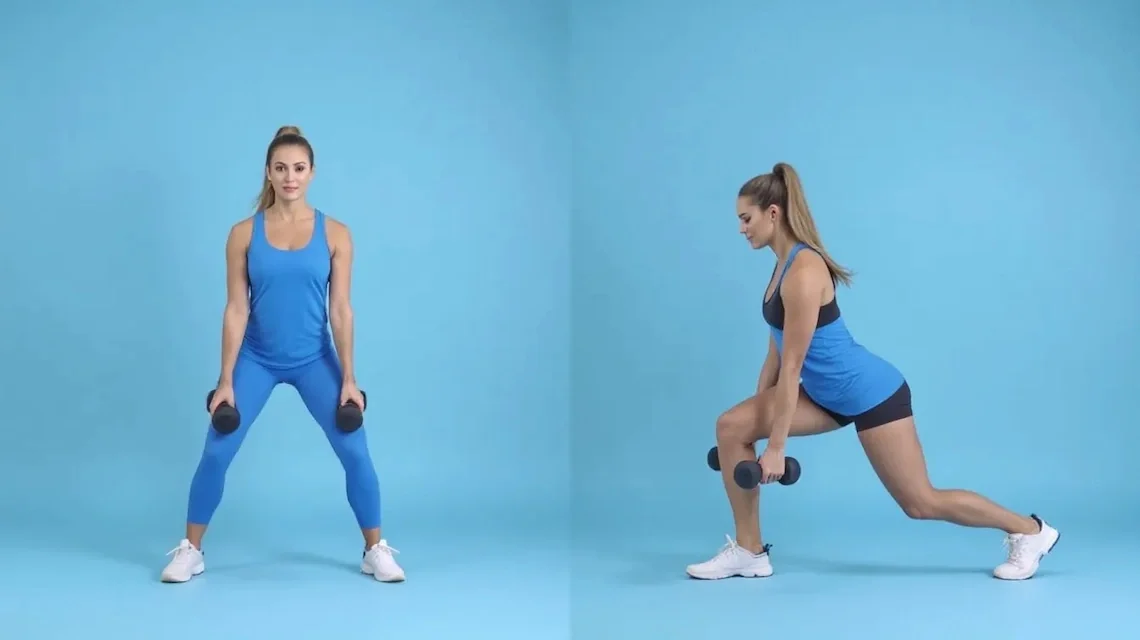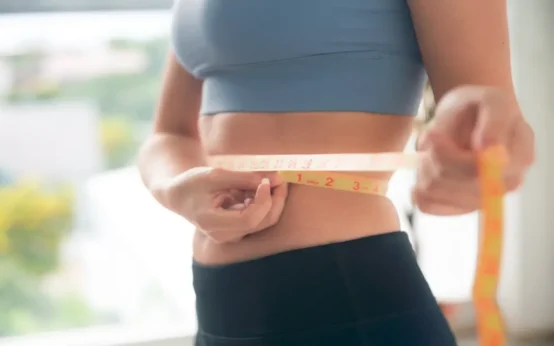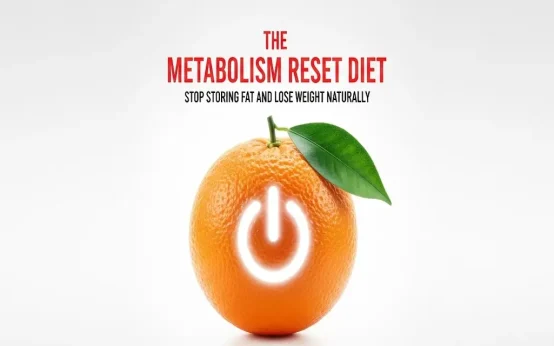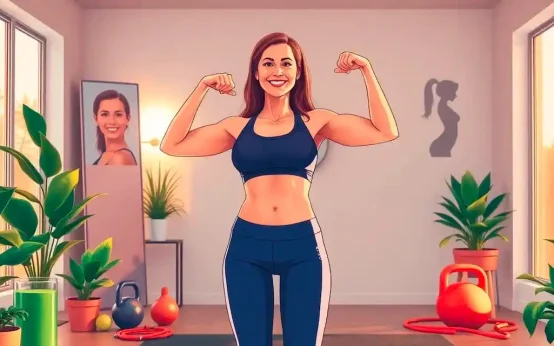Busy schedule and you want to lose weight without leaving home. You can start today in your living room. With smart exercise to lose weight fast at home, you can see real progress.
Short bursts of effort burn calories while bodyweight moves build muscle. No equipment needed, just a small space and a plan. We keep it simple and safe for beginners.
You’ll learn why this works, the top exercises, and routine building. You’ll get tips for form, pacing, and staying consistent. We’ll note safety, when to check with your doctor, and how pairing workouts with a balanced diet speeds results.
Why Home Workouts Are Perfect for Fast Weight Loss
You can create a strong calorie burn and boost your metabolism right at home. The core idea is simple. Fat loss happens when you are in a calorie deficit, which means you burn more calories than you eat. Cardio helps you burn calories now. Strength training helps you burn more later by adding muscle. Together, they make exercise to lose weight fast at home both practical and effective.
Bodyweight workouts and HIIT make this easier. HIIT stacks short, intense efforts with brief rests, which spikes your heart rate and triggers the after-burn effect. Scientists call it EPOC, or excess post-exercise oxygen consumption. Your body keeps using extra oxygen after a hard session, so you continue burning calories while you shower or cook dinner. That is money in the bank for fat loss.
Home training also solves common roadblocks. No gym fees, no commute, no waiting for equipment. You can train in short windows that fit your schedule. Get privacy, which helps you focus and stay consistent. You only need a small space, your body weight, and a plan.
A good home setup combines:
- Quick cardio bursts for high calorie burn
- Simple strength moves to build muscle and raise resting burn
- Smart pacing so beginners and advanced users can both progress
The Role of Cardio in Shedding Pounds Quickly
Cardio raises your heart rate, which pushes your body to use more energy. Your muscles demand oxygen and fuel, so you burn more calories and tap into fat stores over time. When you keep sessions steady or cycle effort with HIIT, you drive up total burn and improve stamina.
You can do effective cardio in a small space with no gear:
- Jumping jacks: Land softly, keep knees slightly bent, brace your core.
- High knees: Pump arms, bring knees to hip height, stay light on your feet.
- Burpees: Squat, place hands down, step or jump to plank, return to stand, add a small hop.
A simple weekly plan:
- Aim for 20 to 30 minutes, 3 to 5 times per week.
- Try intervals, for example: 40 seconds work, 20 seconds rest, repeated for 6 to 10 rounds, short break, then another block.
- Keep one easy session for recovery, such as marching in place or brisk stair steps.
Form tips to prevent injury:
- Warm up for 3 to 5 minutes. March in place, arm circles, slow jacks.
- Land quiet. Soft knees, hips back, chest tall. Think springy, not stiff.
- Stack joints. When you plank or jump back, align wrists under shoulders.
- Control your core. Light brace like you are zipping up tight jeans.
- Progress slowly. Add sets or time in small steps, not all at once.
Beginner-friendly tweaks:
- Step jacks instead of full jacks.
- Marching high knees instead of running in place.
- Burpee walk-outs without the push-up or jump.
If you like structure, try this example block:
- Jumping jacks, 40 seconds, rest 20 seconds
- High knees, 40 seconds, rest 20 seconds
- Burpees, 20 to 30 seconds, rest 30 to 40 seconds Repeat 2 to 3 times. Cool down for 3 minutes with slow marching and deep breaths.
Building Muscle to Boost Your Metabolism at Home
Muscle tissue burns more calories at rest than fat tissue. That means adding even a small amount of lean muscle can raise your resting calorie burn all day. Strength training also improves insulin sensitivity, joint stability, and posture. You will move better and feel stronger in daily life.
Three staple moves you can do anywhere:
- Push-ups: Chest, shoulders, triceps, and core.
- Squats: Quads, glutes, hamstrings, and core.
- Planks: Deep core stability and shoulder strength.
How to perform them with solid form:
- Push-ups: Hands under shoulders, body in a straight line, elbows at about 45 degrees, lower with control.
- Squats: Feet shoulder width, sit hips back, knees track over toes, chest up, push through heels.
- Planks: Elbows under shoulders, squeeze glutes, pull ribs down, keep neck long, breathe slow.
Beginner modifications:
- Push-ups on a wall, then a counter, then the floor on knees.
- Squats to a chair or couch, pause briefly, stand up tall.
- Planks on knees or elevated on a bench or sturdy table.
Progressive overload at home:
- Add reps each week, for example from 8 to 10 to 12.
- Add sets, for example from 2 to 3.
- Slow the tempo, for example 3 seconds down, 1 second up.
- Reduce rest, for example from 60 seconds to 45.
- Advance the move, for example knee push-ups to full push-ups, bodyweight squats to squat pulses.
A simple starter circuit:
- Squats, 10 to 15 reps
- Push-ups, 6 to 12 reps
- Plank, 20 to 40 seconds Rest 60 to 90 seconds and repeat 2 to 4 rounds. Do this 2 to 4 times per week, with at least one rest day between sessions.
Why this helps you lose fat fast:
- Strength sessions build muscle, which increases daily calorie use.
- Cardio sessions raise immediate burn and can trigger the EPOC after-burn.
- When paired with a small calorie deficit from food, your body uses stored fat for energy.
Keep it simple and consistent. Pick a schedule you can repeat. Small wins stack up fast when you train at home with purpose.
Top Exercises to Lose Weight Fast at Home
You want quick results without gear. Use short, smart sessions that hit many muscles at once. Pair fast-paced moves with simple strength work, and you get high calorie burn now and a stronger body later. This is the core of exercise to lose weight fast at home.
Aim for 3 to 5 sessions per week. Keep rest short, focus on form, and push hard in your work periods. Most 20 to 25 minute sessions can burn roughly 180 to 350 calories, depending on your weight and effort.
Full-Body HIIT Circuit for Rapid Fat Burn
This 20-minute, no-equipment HIIT circuit hits your whole body and keeps your heart rate high. It blends cardio and strength so you burn during and after your workout.
Circuit structure:
- Mountain climbers, 30 seconds
- Squat jumps, 30 seconds
- Push-ups, 30 seconds
- Rest, 15 seconds Repeat for 4 rounds. Warm up for 3 minutes before you start.
How to do each move:
- Mountain climbers: Hands under shoulders, core tight, drive knees toward chest fast, keep hips level.
- Squat jumps: Feet shoulder width, sit hips back, explode up, land soft with knees bent.
- Push-ups: Body in a straight line, elbows at 45 degrees, lower chest to floor, press back up.
Why HIIT beats steady cardio for speed:
- Higher intensity taps more muscle fibers and spikes heart rate.
- After-burn effect elevates calorie use for hours post-workout.
- Time efficiency gives you more result from a short block.
Variations:
- Beginner: Step-back climbers, squat to calf raise, incline push-ups on a counter.
- Advanced: Cross-body climbers, tuck jumps, push-ups with shoulder taps.
Estimated burn: 20 minutes, about 180 to 350 calories. Go by effort, not perfection.
Pro tips:
- Keep rests tight. Start each round on time.
- Move fast, but never sloppy. Quality reps beat extra reps.
Core-Focused Moves to Tone and Trim Your Waist
A strong core supports every lift and step. It improves posture, protects your back, and helps you transfer power better in all moves. That means higher output and better calorie burn over the week.
Do 3 sets of 10 to 15 reps each:
- Bicycle crunches: Lie on your back, hands by ears, opposite elbow to knee, switch sides with a steady twist. Keep lower back pressed down. Move smooth, not jerky.
- Leg raises: Lie flat, legs straight, lift to 90 degrees, lower with control without letting your lower back arch. Bend knees for an easier option.
- Russian twists: Sit tall, lean slightly back, feet up or down, rotate torso side to side while keeping hips steady. Tap floor for a clear target.
Progressions and options:
- Easier: Shorter ranges, feet on floor for twists, bent-knee leg raises.
- Harder: Slow tempo, 2 to 3 second lower on each rep, add a pause at the hard point.
How this supports weight loss:
- Better posture means better breathing and form during high-output work.
- Stronger trunk allows harder pushes in HIIT and lower body training, which lifts total weekly calorie burn.
Estimated burn: 10 to 12 minutes, about 60 to 120 calories. Save short rests for control, not comfort.
Lower Body Exercises for Slimmer Legs and Hips
Your legs and glutes are large muscle groups. Training them uses a lot of energy, and it keeps burning calories after you stop. You also build strength for jumps, climbs, and daily life.
Do 3 sets of 12 reps per leg:
- Lunges: Step forward, lower until both knees are near 90 degrees, front knee tracks over toes, push back to start. Switch legs each rep.
- Easier: Reverse lunges for better balance.
- Harder: Jump lunges for power, or add a 2-second pause at the bottom.
- Wall sits: Back flat to a wall, knees at 90 degrees, hold for 30 to 60 seconds. Count each hold as a set.
- Easier: Sit higher with a smaller knee bend.
- Harder: Lift one heel or perform a slow pulse.
- Glute bridges: Lie on your back, feet hip width, drive through heels, squeeze glutes at the top, lower with control.
- Easier: Shorter range, pause on the floor between reps.
- Harder: Single-leg bridges, or slow 3-second lifts.
Form keys:
- Knees track with toes, not caving inward.
- Core braced to keep hips steady.
- Controlled tempo to protect joints and build real strength.
Estimated burn: 15 to 20 minutes, about 120 to 220 calories, based on pace and rest.
Need a simple sequence for the week?
- HIIT circuit, 20 minutes, 2 to 3 times
- Core block, 10 to 12 minutes, 1 to 2 times
- Lower body block, 15 to 20 minutes, 2 times
Focus on full-body moves for efficiency:
- Mountain climbers: 4 rounds of 30 seconds
- Squat jumps: 4 rounds of 30 seconds
- Push-ups: 4 rounds of 30 seconds
- Bicycle crunches: 3 sets of 10 to 15 reps
- Leg raises: 3 sets of 10 to 15 reps
- Lunges: 3 sets of 12 reps per leg
All moves need no gear, just a small space and a plan. Stay consistent, track your rounds or reps, and nudge your effort up a little each week. That is how exercise to lose weight fast at home pays off.
How to Create a Simple Home Workout Routine That Works
You do not need a long plan to see results. Start with 3 to 4 days a week, 20 to 45 minutes per session. Mix cardio, strength, and core so you burn calories now and keep burning later. This simple setup makes exercise to lose weight fast at home doable and sustainable.
Always add a warm-up and cool-down. Warm up for 3 to 5 minutes with marching in place, arm circles, and hip hinges. Cool down for 3 to 5 minutes with slow breathing and light stretches for hips, hamstrings, chest, and shoulders. Your joints will thank you.
Sample Beginner Weekly Plan for Quick Results
This plan balances effort and recovery. It also fits small spaces and zero equipment. Use a timer and move with intention.
- Day 1: Full-body HIIT
- 20 to 30 minutes total. Work 30 to 40 seconds, rest 20 to 30 seconds.
- Moves: jumping jacks, mountain climbers, squats, push-ups, burpees.
- Aim for 2 to 4 rounds. Keep form clean and land soft.
- Day 2: Rest or walk
- 20 to 30 minutes at an easy pace. Keep a light sweat, not a grind.
- Optional mobility: 5 minutes of cat-cow, hip flexor stretch, and ankle circles.
- Day 3: Strength focus
- 25 to 40 minutes. Circuit style, 8 to 15 reps each.
- Squats, push-ups, glute bridges, reverse lunges, plank holds.
- Do 2 to 4 rounds. Rest 45 to 60 seconds between sets.
- Day 4: Cardio
- 20 to 35 minutes. Choose intervals or steady pace.
- Options: high knees, fast steps on a stair, shadow boxing.
- Intervals example: 1 minute fast, 1 minute easy, repeat 8 to 12 times.
- Day 5: Core and lower body
- 20 to 30 minutes. Focus on control.
- Bicycle crunches, leg raises, wall sits, glute bridges, side planks.
- 3 sets per move. Rest 30 to 45 seconds.
- Day 6: Active recovery
- 20 to 40 minutes of easy movement. Walk, gentle yoga, or light bike.
- Add 5 to 10 minutes of deep breathing to reset your nervous system.
- Day 7: Active recovery
- Keep it light. A casual walk or a mobility flow is perfect.
- If you feel fresh, add a 10-minute brisk walk finish.
Adjust based on fitness:
- New to training: Start with 3 days, keep sessions near 20 to 25 minutes. Use step jacks, incline push-ups, and walk-out burpees.
- Feeling strong: Nudge work time up by 5 to 10 seconds, add a round, or reduce rest slightly.
- Short on time: Stack two 10-minute blocks during the day. Consistency beats perfection.
Fuel progress with simple rules:
- Form first: Quality reps matter more than speed.
- Warm-up and cool-down: Always include both to protect joints.
- Rest counts: Recovery days prevent burnout and help you come back stronger.
Tracking Progress and Adjusting Your Routine
Track the work you do so you can improve on purpose. Simple beats fancy, as long as you use it.
- Workout journal: Write date, workout type, rounds, reps, and how you felt on a 1 to 10 effort scale. Example: HIIT, 3 rounds, 30 on/20 off, effort 7.
- Photos: Front, side, and back, once a week in the same light and posture.
- Measurements: Waist, hips, chest, thighs, and arms every 2 weeks. Use the same tape, same time of day.
- Apps or timers: Use a basic interval timer to keep work and rest on track. Many free options do the job well.
When to increase intensity:
- After 2 weeks, if your effort feels easier by 1 to 2 points, it is time to progress.
- Add 1 variable at a time:
- Time: add 5 minutes to a session, or 5 seconds per work bout.
- Sets: add 1 extra round to your circuit.
- Reps: add 2 to 3 reps per set for strength moves.
- Rest: reduce by 5 to 10 seconds when form stays sharp.
- Variations: step jacks to full jacks, knee push-ups to full push-ups, squats to squat jumps.
When to hold steady:
- Persistent joint pain, heavy fatigue, or poor sleep mean you should repeat the current week.
- Keep one light day each week to protect progress.
Celebrate non-scale wins:
- More energy in the morning and fewer afternoon slumps.
- Clothes fit better and waist measurements drop.
- Improved stamina during stairs or long walks.
- Better mood and sleep from regular training.
Quick weekly check-in:
- Review your journal. Did you hit 3 to 4 sessions?
- Circle one win, like more reps or shorter rest.
- Choose one small progression for next week.
- Schedule rest days first, then plug in workouts.
This simple system keeps you consistent and honest. Pair it with smart food choices, and your exercise to lose weight fast at home will pay off in visible results.
Pro Tips to Supercharge Your Home Weight Loss Journey
Small daily habits turn hard workouts into real fat loss. Pair smart training with simple food choices, steady hydration, quality sleep, and sane recovery. Stack these basics, and your exercise to lose weight fast at home works better in less time.
Here are practical tips you can use today:
- Schedule it: Put workouts on your calendar like a meeting. Short sessions count.
- Use RPE: Aim for a 7 to 8 out of 10 effort on hard days, a 5 to 6 on easy days.
- Move more between workouts: Add steps, take stairs, stand more. These small moves raise daily burn.
- Protect recovery: Keep at least one full rest day. Sore joints or heavy fatigue mean it is time to dial back.
- Free help: Use YouTube for guidance and timers. Search for “no equipment HIIT 20 minutes,” “beginner bodyweight strength,” or “mobility for recovery.”
Hydration and sleep tie this together. Drink water throughout the day, not just at workouts. Aim for pale yellow urine. Most people do well with 2 to 3 liters daily, more if you sweat a lot. Sleep 7 to 9 hours per night. Keep a simple wind down, dim lights, shut screens, and stop caffeine after lunch. Better sleep controls hunger hormones and supports muscle repair.
Watch for common mistakes:
- Overtraining: Daily HIIT is not the goal. Rotate hard, moderate, and easy days.
- All-or-nothing meals: You do not need a strict diet. Choose better, not perfect.
- Skipping protein: Protein helps you recover and feel full. Do not miss it after training.
- Tiny portions forever: Severe cuts backfire. A small calorie deficit is enough.
Pairing Workouts with Smart Nutrition Choices
Fuel like you train, simple and steady. You do not need a strict plan. Focus on whole foods, calm portions, and protein after workouts. Make choices you can keep next month and next year.
Use this easy plate method for most meals:
- Half plate veggies: Leafy greens, peppers, broccoli, tomatoes, carrots.
- Quarter plate protein: Eggs, chicken, fish, tofu, beans, Greek yogurt.
- Quarter plate smart carbs: Potatoes, rice, oats, whole grain bread, fruit.
- Add healthy fats: Olive oil, avocado, nuts, or seeds in small amounts.
Protein helps you keep muscle while you lose fat. Aim for a protein-rich meal or snack within 1 to 2 hours after training. Most people do well with 20 to 35 grams per meal. Examples:
- Greek yogurt bowl: Yogurt, berries, chia seeds, honey drizzle.
- Egg and veggie scramble: Eggs, spinach, peppers, salsa, corn tortillas.
- Tuna or chickpea salad: Olive oil, lemon, mixed greens, whole grain toast.
- Cottage cheese and fruit: Add cinnamon and a few walnuts.
Portion control that does not feel strict:
- Hands as tools: Protein the size of your palm, carbs the size of your cupped hand, fats the size of your thumb, veggies the size of your fist or more.
- Eat to 80 percent full: Pause halfway, take a breath, and check in with hunger.
- Plan snacks: Pair protein with fiber to stay full. Apple with peanut butter, carrots with hummus, turkey roll-ups, or edamame.
Time your food around workouts for better energy:
- 60 to 120 minutes before training, have a light meal with carbs and a bit of protein. Oatmeal with banana, toast with eggs, or rice with tofu.
- If you train early and cannot eat much, sip water and have a small bite, then eat a proper breakfast after.
- After training, drink water first, then eat protein with some carbs to refill energy.
Stay hydrated without overthinking it:
- Start your day with a glass of water.
- Sip during your session, about a cup every 15 to 20 minutes for sweaty workouts.
- Add a pinch of salt or a squeeze of citrus after hot sessions if you feel drained.
Keep it sustainable:
- Shop the edges of the store for most items, then grab pantry staples like beans, oats, and frozen veggies.
- Batch cook simple proteins and carbs on one day, then mix and match all week.
- Eat foods you like in portions that align with your goal. You will stick with it longer.
A quick example day that fits home training:
- Breakfast: Veggie omelet with toast, side of berries.
- Lunch: Chicken, rice, and a large salad with olive oil and lemon.
- Snack: Greek yogurt with sliced banana.
- Dinner: Salmon or tofu, roasted potatoes, and a big plate of mixed veggies.
- Post-workout add-on if needed: Cottage cheese and pineapple, or a protein smoothie with milk, frozen fruit, and spinach.
Pair these food habits with your exercise to lose weight fast at home plan. Keep your water bottle close, guard your sleep, and pace your training. Stay consistent, not perfect, and your results will build week after week.
Conclusion
You have a simple plan that works at home. Short cardio bursts, basic strength moves, and steady habits build real momentum. Pair your sessions with smart food, water, and sleep, and your results stack up fast. This is why exercise to lose weight fast at home is both accessible and effective.
Start now. Pick one move from this guide, set a timer for 10 minutes, and do it today. Commit to one week, track your reps, and nudge your effort up a little. Stay patient, enjoy the process, and keep showing up. Small wins add up to a big change when you are consistent.
Related post: Healthy Food Ideas to Lose Weight
Rapid Home Workouts for Fat Loss: FAQ
How fast can I lose weight with home workouts?
Expect 0.5 to 2 pounds per week with a calorie deficit. Faster loss risks muscle loss, low energy, and rebound weight. Pair exercise with smart eating for steady progress.
What exercises burn the most calories at home?
Compound moves burn the most, since they use many muscles. Try burpees, jump squats, mountain climbers, high knees, walkouts, and kettlebell swings. Mix them with brisk walking or stair climbs.
Is HIIT better than steady cardio for fast fat loss?
HIIT is time efficient and can match longer cardio sessions. It raises heart rate and preserves workout time. Do 10 to 20 minute intervals, two or three times per week. Balance with easier days to recover.
Do I need equipment to see results?
No. Bodyweight circuits work well when done with effort and good form. Add load if you have dumbbells, bands, or a kettlebell. More resistance helps keep muscle while you lose fat.
How often should I work out each week?
Aim for 4 to 6 days of movement. Combine 2 to 4 strength sessions, 2 to 3 cardio or HIIT sessions, and daily light activity. Keep at least one full rest day.
What’s a simple 20-minute fat loss workout at home?
Try this, repeat 3 to 4 rounds, rest 60 seconds between rounds:
- 40 seconds squats, 20 seconds rest
- 40 seconds push ups or incline push ups, 20 seconds rest
- 40 seconds alternating reverse lunges, 20 seconds rest
- 40 seconds mountain climbers, 20 seconds rest
Warm up first, cool down after.
Can I spot reduce belly fat with specific exercises?
No. You cannot choose where fat leaves first. Train your whole body, get a calorie deficit, and sleep well. Core work builds strength and posture, not targeted fat loss.
How do I set a calorie deficit without strict dieting?
Eat protein at each meal, fill half your plate with veggies, choose whole foods most of the time, and limit liquid calories. Track portions for two weeks to learn your baseline. Aim for a 300 to 500 calorie daily deficit.
Will I lose muscle if I only do cardio?
You might. Include strength training two or more days per week. Eat enough protein, about 0.7 to 1.0 grams per pound of goal body weight, spread across meals.
What’s the best time of day to work out for fat loss?
The best time is the one you can repeat. Morning sessions help routine. Afternoon or evening sessions may feel stronger. Consistency matters more than timing.
How long until I see results?
Most people notice better energy within one week, performance gains in two to three weeks, and visible changes in four to eight weeks. Photos and measurements show progress better than the scale alone.
I’m a beginner. Where should I start?
Start with 3 days per week. Use 30 minute sessions with basic moves, like squats, hinges, pushes, pulls, and carries. Keep intensity at a 6 or 7 out of 10. Add time or difficulty each week.
What if my joints hurt during high impact moves?
Swap jumps for low impact options. Do step back lunges, fast marches, glute bridges, and cycling on a stationary bike. Strengthen hips and core. Pain that lingers means you should reduce load or seek guidance.
How do I boost daily calorie burn without formal workouts?
Increase NEAT, your non-exercise activity. Pace during calls, use the stairs, do short walk breaks, and set a step target. Small bursts add up over the day.
Do I need to do ab workouts every day?
No. Train your core 2 to 4 times per week. Use planks, dead bug variations, side planks, and carries. Focus on control, not crunch count.
What causes a fat loss plateau at home?
Your body adapts. You may be eating more than you think or moving less. Recheck portions, add a set or two, increase daily steps, or try intervals. Sleep and stress also affect progress.
Is fasted morning cardio better for fat loss?
Not by much. Total daily calories and consistency matter more. Choose the time that helps you stick with the plan.
How important is sleep for losing fat?
Very. Aim for 7 to 9 hours. Poor sleep increases hunger and lowers training effort. A steady bedtime routine helps.
Should I track calories or just focus on workouts?
Tracking helps most people lose faster, at least for a short time. If you prefer not to track, use portion guides, plan meals, and limit snacks. Keep protein and fiber high.
How do I warm up and cool down at home?
Warm up for 5 minutes with light cardio and dynamic moves, like leg swings and arm circles. Cool down with easy walking and 3 to 5 minutes of stretching for hips, hamstrings, and chest.
Are home workout apps or videos worth it?
They can provide structure and variety. Pick one that matches your level, offers progressions, and uses the gear you have. Check for clear coaching on form.
What’s a simple weekly plan I can follow?
- Monday, full body strength, 30 to 40 minutes
- Tuesday, brisk walk or intervals, 20 to 30 minutes
- Wednesday, mobility and core, 20 minutes
- Thursday, full body strength, 30 to 40 minutes
- Friday, intervals or steady cardio, 20 to 30 minutes
- Saturday, long walk or hike, 45 to 60 minutes
- Sunday, rest or gentle mobility, 10 minutes
Any quick signs I’m pushing too hard?
Persistent fatigue, poor sleep, rising resting heart rate, nagging aches, or dropping performance. Take a lighter week or add rest. You should finish most sessions feeling worked, not wrecked.





 How to Start a Weight Loss Program
How to Start a Weight Loss Program  What Vitamin Deficiency Makes It Hard to Lose Weight?
What Vitamin Deficiency Makes It Hard to Lose Weight?  Improve Fat Burning With a Metabolism Reset Diet
Improve Fat Burning With a Metabolism Reset Diet  How to Avoid Loose Skin When Losing Weight
How to Avoid Loose Skin When Losing Weight  Good Eating Habits for Weight Loss
Good Eating Habits for Weight Loss  A Guide to Weight Loss for Busy People in Today’s Society
A Guide to Weight Loss for Busy People in Today’s Society